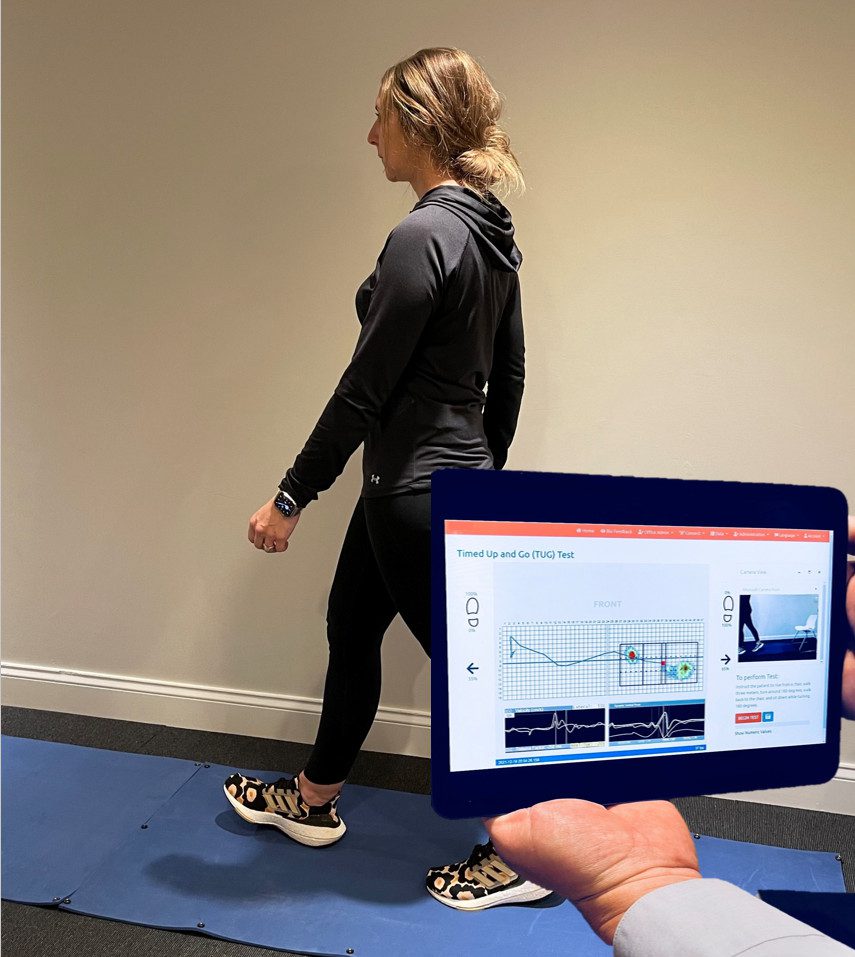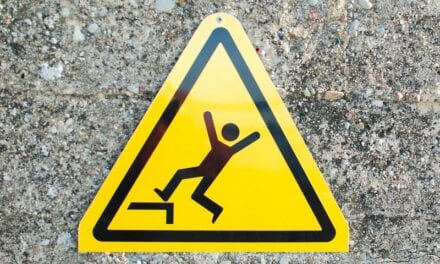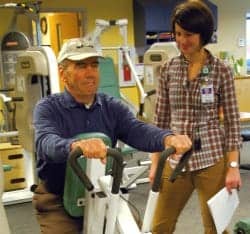Advanced technology allows rehab professionals to better implement dual task science to improve a patient’s gait. Can you afford to practice without it?
By Mike Studer, PT, DPT, MHS, NCS, CEEAA, CWT, CSST, FAPTA
We know that our worlds are busy, and for many, increasingly busier. Are our sessions in rehabilitation representing a busy world well enough? Are we challenging our patients to be able to tolerate and thrive or even just sustain safe mobility when distracted? In this article we will explore the benefits of applying dual-task (DT) walking for your patients with impaired gait and dynamic balance, with an acknowledgement of some of the ancillary benefits of DT along the way. Recent advances in technology are proving promising and may be a perfect fit for your patients, and your clinic right now.
Multi Diagnostic Fall Risk and Measure of Performance
Fall risk in the elderly is the most prolifically studied group across articles of dual task. Many conditions outside of aging have been studied with great promise as well. In no specific order, these include concussion, stroke, Parkinson Disease, Multiple Sclerosis, and neuropathy. It should be noted that dual task science is also routinely studied in the sport performance world within the context of promoting skill acquisition and even automaticity. Recently, the consideration of tolerating a secondary distractor has also been leveraged in military exercises, training the tactical warrior.
The science of dual tasking includes examination (DT tolerance) and treatment (using DT interference, or DTI). Technological advances are making it more intuitive for the therapist and patient alike to capture objective data about DT tolerance, which is often expressed as a percentage of performance without distraction, or DT Cost (DTC). Within the realms of DT examination, the science supports use of dual task in prescriptive manner, using DTC as a prodromal diagnostic tool (early detector of PD and AD) as well as a prognostic tool or clinical indicator in the case of those returning to prior function after injury, most notably sport-related concussion.
Podcast: Listen to Mike Studer talk to Rehab Management about Dual Task in Return to Sport After Concussion
Similarly and increasingly, DTI has been used in rehabilitation as an outcome measure for persons with stroke (PwS), concussion, imbalance/fall risk, and in those with a known or suspected degenerative disease. In this manner, clinicians increasingly use the DTC equation to express impairment and improvement in a functional task with superimposed distraction.
Science of Dual Task
The science of dual task is continuing to evolve and improve in both examination and intervention. As with any measure, the reliability and validity, predictive value, and methodology of dual task paradigms are being considered across hundreds of research articles per year. Interventions that use DTI are improving as well. Specifically, the science of DT is increasingly more practical, task specific, and more precise in dosage, bringing more variety and making the treatments more engaging for patients, while applications become more intuitive for therapists. Technology for dual task testing and training in gait is now viable for the most severely impaired (using locomotor robotics and VR) and the most high-level patients (using overground walking and challenging cognitive tasks). DT technologies are among the most compelling improvements that the rehabilitation professional can offer to their patients today, utilizing gamification, virtual reality, and wearables that can capture and objectify movement performance through more person-specific contexts.

Therapists can additionally utilize DT science coupled with technology in skilled care documentation. Utilizing objective data such as the actual sway recorded in centimeters while both distracted and focused, each conditions of a modified Clinical Test of Sensory Interaction on Balance (mCTSIB), remains more valuable to reviewers than a qualitative scoring system. Expressing fall risk by interlimb variability recorded gait comparing focused single task to walking-with-a-working-memory task remains superior to a physical-only measure of distance/time. Documenting DT cost in a 30-second sit-to-stand captured with and without distraction is more sophisticated than a raw 30SSTS score alone.
While these are irrefutable examples of combining the science of DT with technology, even these do not tell the whole story of the clinical value. Consider the ceiling effect that limits our physical-only and cognitive-only measures as we advocate for patients to realize their full potential and community re-integration. Dual task expands the conversations, and potentially the authorization.
Engaging Technological Advances for Patient and Therapist
Some of the most compelling technological advances in DT have come into existence within the last two years. It is now within reach for therapists to affordably and conveniently adapt their current treadmill with or without body weight support to become both a gait laboratory and an engaging space for their patients. On most platforms, therapists and patients alike benefit from body worn sensors, instrumented treadmills, or camera recordings to collect outcome data about physical performance. All of the gait variables that you want, and some that you may not be able to track as easily with your eyes, are available.
Can you see yourself conducting a Timed Up and Go as a shuttle test (several laps) with a person with Parkinson Disease while the patient interacts with a computerized display that requires working memory? Can your athlete recovering from sport-related concussion benefit from objective measures that help her see and hear that her balance under dual task conditions is back to the baseline measurement that she displayed in preseason screening? Technology measures the performance, potentially making this more valid and objective in the mind of the patient. Finally, imagine the excitement of your 9-year-old patient with cerebral palsy who is excited about following the sequence of colors in the same order that it was presented on the board.
As Anne Shumway-Cook and Marjorie Woollacott reference in their newest edition of Motor Control, therapists may realize the benefits of these technologies as we give greater consideration for and actualized potential within the Task-Environment-Individual interaction. In these cases, technology can support the principles of motor learning through skilled therapy. The compelling nature of DT can permit one to participate longer (endurance and repetitions), engage more deeply (attention), or compete for a new high score (intensity). Clearly, the combination of technology with engaging games or environments can elevate the efficacy of our therapeutic environments.
The technology of dual task for gait and balance can make for some of the most widely attended and popular booths at larger meetings and conventions, including the American Physical Therapy Association’s (APTA) upcoming Combined Sections Meeting in San Diego. These technological advances make the exposition center a must, and a value-added part of the conference experience. If you have not yet had the experience to be engaged in dual task technology technological applications in gait, a conference exposition center is a great place to experience the advances firsthand. Until then, the accompanying photos and resource box may be of assistance for your vicarious experience and due diligence.
Finally, the next time you find yourself walking through your hometown to a local grocery store while remembering your grocery list and avoiding those puddles along the way…just know that your patients want to experience that again, and that you should prefer that they have it within your care before facing it alone.
Mike Studer, PT, DPT, MHS, NCS, CEEAA, CWT, CSST, FAPTA, is a co-owner of Spark Rehabilitation and Wellness in Bend, Ore. He is also an adjunct professor at Oregon State University’s DPT program, where he leads the coursework on motor control. Studer is a world-recognized educational provider and clinician in the areas of stroke, functional neurologic disorders, Parkinson Disease, and more. For more information, contact [email protected].
Product Resources
The following companies provide products that are useful in gait training:





